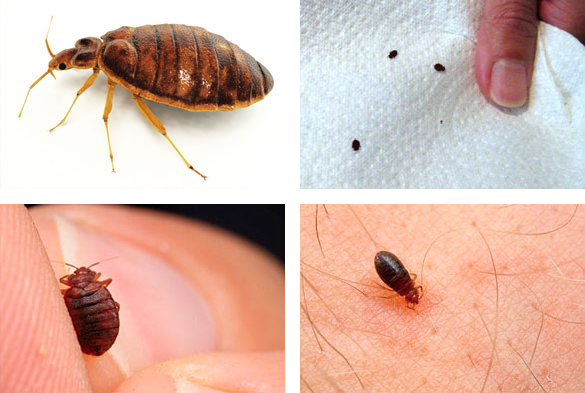The Truth About Bed Bugs
Bed bugs don’t just live in New York City these days. They’re everywhere! Travelers and vacationers all across the country live in fear that their hotel might be hit with an infestation. A few bed bugs picked up on the go might translate to a ruined mattress and disrupted life.
HOW TO SPOT A BED BUG
- An adult bed bug is about 1/5 inch long, oval in shape and flat.

SIGNS OF AN INFESTATION
- Bed bugs shed skin castings and lay eggs when they take up residence.

Bed Bug Bites
- After feeding, they leave red, blotchy marks. These bites can be dangerous for a small part of the population.

Bed Bug Facts
- An army of these can attack a person 500 times in one night!
- An adult bed bug is about 1/5-inch long, oval in shape and flat. They’re generally brown except after sucking blood. Their body then becomes swollen and the color changes to a dark red.
- Bed Bugs like to hide in the cracks and electrical outlets in walls, behind wallpaper, base boards and picture frames, between beds and around the creases of mattresses and in bedding materials.
- A female bed bug can lay as many as 500 eggs during her lifetime.
- Bed bugs are typically nocturnal insects (they creep about at night time).
- While bed bugs do not transmit any pathogens or diseases, their bites usually result in swollen red, itchy welts.
- Small reddish or brownish spots on one’s linens are often the first sign of an infestation. These spots are the bed bug’s droppings. Another sign is swelling where you’ve been bitten.
- A bed bug’s saliva features an anesthetic to numb the pain as it’s biting. It also contains anti-coagulant to keep the blood of it’s meal host flowing.
- Development time from first nymph stage to sexually mature adult is 35-48 days under favorable environmental conditions.
- Female bed bugs lay 1 to 5 eggs after each blood meal and can lay a total of 200 eggs in 9-18 months.
- Bed bugs are nocturnal, feeding when their host is asleep.
- It takes a bed bug about 5 to 10 minutes to finish a blood meal. The bites are painless, so the host is unaware they are being bitten.
- Waking up with red, itchy bug bites can be the result of bed bugs. A pattern of 3 bites in a row is a reported characteristic of bed bugs bites.
- A “sweetish”, “buggy” odor in a heavily infested room may or may not be apparent.
- If the host begins sleeping in another room, bed bugs will follow to the new location.
- Bug bugs can come from a variety of places. But typically one of the most common forms of infestation is through contacts with infested furniture in hotels, motels, and other places of temporary accommodation.
- Bug bugs can be passed on from used clothing or furniture.
- Apartment complexes often have bug bugs because they can get from apartment to apartment easily.
- When a bed bug bites a human it injects two hollow tubes into the skin. With one tube the bed bug injects a anti-coagulant, anesthetic and with the other tube it steals your blood.
- Typically one can’t feel a bed bug bite until minutes or hours later.
- The bites may take anywhere from a few days to a few weeks to go away on their own.
- Remember, just because they are called bug bugs doesn’t mean they are only in your bed. Although in most cases bug bugs are in a small, concentrated area and usually within 10-20 feet of where you sleep.
Learn More:
Videos: National Geographic | Bed bugs , Discovery News | Bed Bugs on the Rise , ABC News | Hidden Hotel-Room Dangers
Article: Bed Bugs – How and why the mystery creature, nearly eradicated 60 years ago, is making a comeback
Some photos above courtesy of Alex Wild Photography.








